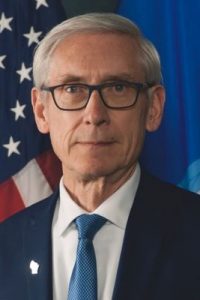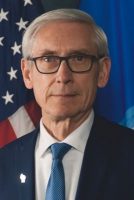 Governor Tony Evers’ state budget was introduced last evening (2/16) in a budget address to lawmakers and contains a strong public school funding component, including significant investments in top WASB funding priorities. Find more budget details in the following documents, beginning at the page noted in parentheses: Budget in Brief (p. 13); Full Document (p. 485).
Governor Tony Evers’ state budget was introduced last evening (2/16) in a budget address to lawmakers and contains a strong public school funding component, including significant investments in top WASB funding priorities. Find more budget details in the following documents, beginning at the page noted in parentheses: Budget in Brief (p. 13); Full Document (p. 485).
Below we look at our budget priorities, as laid out in our WASB Legislative Agenda, and how the governor’s proposal addresses each priority.
WASB Priority: Secure an increase in spendable resources for school districts that, at a minimum, equals or is greater than the rate of inflation in each year of the two-year state budget.
Governor’s Budget:
-
- Provides an additional $612.8 million in state general aid to school districts over the biennium, the largest increase since the 2005-07 biennium.
- Allows a $200 per pupil adjustment (increase) in school district revenue limits in 2021-22 and $204 per pupil in 2022-23.
- Increases the low revenue ceiling from $10,000 per pupil to $10,250 in 2021-22 and $10,500 in 2022-23 to provide greater revenue limit equity for low-spending school districts. This increase could help raise per pupil spending in an estimated 140 low-spending districts
WASB Priority: Secure a significant increase in special education categorial aid.
Governor’s Budget:
-
- Provides an additional $709 million in special education categorical aid over the biennium.
- Increases special education aid by $296.7 million in 2021-22 and by $412.9 million in 2022-23 to reimburse eligible special education costs at 45 percent and 50 percent in those fiscal years, respectively.
(The governor’s proposed budget would also convert special education aid from a sum certain appropriation to a sum sufficient appropriation, to ensure that aid will not be prorated and will actually meet the promised percentage level of support.)
WASB Priority: Secure a significant increase in resources for school-based mental health services to students (and staff).
Governor’s Budget:
-
- Provides an increase of $22.5 million in 2021-22 and $24 million in 2022-23 for school mental health categorical aid.
- In addition, expands the school mental health categorical aid program to support all pupil service professional staff expenditures and provide a roughly 10 percent reimbursement of such expenditures in each year of the biennium. (Pupil service professionals include school counselors, psychologists, social workers, and nurses.)
- Increases funding for school-based mental health services (a/k/a Collaboration) grants by $3.5 million in each year of the biennium and expands the definition of mental health providers to allow more rural school districts and qualified organizations to access these grants by partnering with independent providers or other organizations.
WASB Priority: Secure provisions that mitigate the effects of the drop in student membership counts (which affect both revenue limit calculations and per pupil aid allocations) caused by the pandemic.
Governor’s Budget:
-
- Includes an adjustment to the rolling three-year membership average to account for the effect of the pandemic on school district enrollment. (The Governor recommends allowing school districts to use the greater of 2019 and 2020 pupil counts for both summer and fall (third Friday) in the calculation of revenue limits to adjust for distortions in pupil counts due to the COVID-19 pandemic.)
What about Per Pupil Categorical Aid?
Governor’s Budget:
- Increases per pupil categorical aid (PPA) payments from the current $742 per pupil to $750 per pupil and provides districts with a supplemental per pupil aid payment of $75 for each low-income pupil.
Note: It has consistently been Gov. Evers’ and the DPI’s policy preference to provide funding increases though the increases in general equalization aid and per pupil revenue limits. PPA payments were created by the legislature and it has generally been the legislature that has shifted dollars to PPA during the budget process. We would expect this to happen again in the current budget. One question is whether lawmakers will attempt to condition such PPA payments on schools providing in-person instruction. The governor has not shown an opposition to signing a budget with PPA increases and used his veto pen to increase PPA significantly before signing in the 2019-21 budget.
Stay tuned here for further and more detailed looks at other aspects of the budget proposal.

